The rise in 3-MCPD in Malaysian palm oil is attributed to adulteration of production oil with hazardous waste constituents due to changes in extraction process at palm oil mills to recover declining oil extraction rates (OER), over the years by ways of:
- Recycling steriliser condensate into the production oil process to recover its constituent residual oil.
- Recycling empty fruit bunch pressed liquor into the production oil process to recover its constituent residual oil.
3-MCPD levels found in refined palm oil and palm fats are the highest in crude palm oil sourced from Malaysia. While it is known that several other refined food oils contain traces of the contaminant, Malaysian palm oil contains 3 to 14 mg/kg, which is up to 14 times higher than the maximum save level set by the European Food Safety Authority.
Interestingly, it was recently (May 2017) reported that “As Malaysia steps into the second century of commercial oil palm planting, … the challenges facing the industry will only continue to intensify.” Industry captains were quoted as saying that “In order to face the increasing demands on the industry, Malaysia needs to work towards creating a distinguished Malaysian brand for palm oil, which will be accepted as the preferred choice by global customers.”
The above statements come in the face of the industry grappling with allegations of cancer health concerns due to the use of palm oil in food products, for example, Nutella. The allegation was related to the occurrence of 3-monochloropropanediol (3-MCPD) and Glycidyl fatty acid esters (GE) in palm oil. Should we be worried?
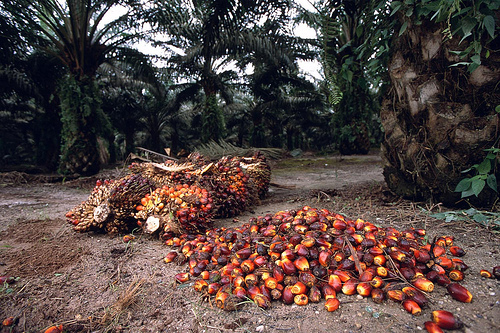
When oil palm fresh fruit bunches (FFBs) are harvested from the trees, their fall from great height onto the ground shatters the fruits around the tree. It is unavoidable that both fruit bunches and the shattered loose fruits pick up traces of soil, fertiliser, pesticides (significantly rat poison dispersed in the fields to control rodent population) and weed killers in the fields. By recycling the steriliser condensate and empty fruit bunch (EFB) pressed liquor into the production oil process, the hazardous waste constituents adhering to the fresh fruit bunches are introduced into the production oil. Chlorine compounds present in the waste constituents find its way into crude palm oil (CPO) and reacts with the oil acting as a requisite chlorine precursor in the formation of 3-MCPD ester that is carcinogenic.
Indeed, 3-MCPD and GE are found in high levels in refined palm oil and palm fats and their values are highest in refined palm oil sourced from Malaysia and five to 10 times higher compared to most other refined food oils. Actually, potential safety issues in relation to these compounds were first raised more than 10 years ago, in 2006, and we must concede that since then the food industry has been involved in extensive research to investigate mitigation efforts.
Regulatory sources in Europe state that as a result of voluntary steps taken by food producers to lower consumer exposure, the levels of GE in refined palm oil imported into Europe have somewhat reduced between 2010 and 2015. These voluntary efforts must be recognised and praised. However, the content of 3-MCPD and its fatty acid esters in refined palm oil has not reduced significantly during the period. Mitigation of 3-MCPD ester levels has been particularly challenging and its levels in refined palm oil in Europe remain high at 7.9 mg/kg.
Chlorine precursors present in crude palm oil (CPO) leads to formation of 3-MCPD ester and therefore the key for low 3-MCPD ester content is at the oil palm mills and plantations. As of today, the chlorine sources can only be effectively removed during CPO production at the oil mill, where conversion of chlorinated substances starts during sterilisation of FFB at the mills. Thus the focus on mitigation strategies should be at plantation field practices and the oil extraction processes at the mills.
Looking back, in May 2016, the European Food Safety Authority (EFSA) warned that contaminants in palm oil raise potential health concerns across the board. The EFSA found that the major cancer concern is over 3-MCPD and GE. This was confirmed in a statement by the Chair of EFSA’s expert Panel on Contaminants in the Food Chain, Helle Knutsen, that “There is sufficient evidence, that these contaminants pose a cancer risk”.
Besides EFSA, the International Agency for Research on Cancer (IARC) (cancer agency of the World Health Organization) also identified 3-MCPD esters, one of the main contaminants in refined palm oil, as “possibly carcinogenic to humans“.
3-MCPD esters are potential carcinogens due to the fact that they readily hydrolyse into the free form 3-MCPD during digestion in the gastrointestinal tract, which has been found to be carcinogenic inducing tumours in various organs; of which the kidney is the main target organ. So it’s easy to understand why significant effort must be devoted to inhibit and eliminate the formation of 3-MCPD esters. Using available toxicological data, EFSA has defined the tolerable daily intake (TDI) level for 3-MCPD (including esters) at 0.8 µg/kg bodyweight. In order to meet the defined TDI, EFSA has set a target for maximum level of 3-MCPD ester in refined palm oil at 1.0 mg/kg.
Palm oil has a high capacity for the formation of the esters and yet is an important edible oil in human nutrition. Palm oil and palm fats are used in many food products such as peanut butter, margarine, pastries and cakes, bread spreads like Nutella.
Food safety is a key issue for consumers and therefore, an important factor in food trade. The palm oil industry should be aware that a large portion of palm oil produced is destined for human consumption and of the food safety requirements that should have stringent regulations.
Close collaboration between governments and industry is becoming more and more critical as the increased globalisation of the food trade has increased the risk and spread of contaminated food that uses palm oil as an ingredient.
How are carcinogenic substances formed in palm oil?
3-MCPD is a chlorinated analogue of glycerol having a chlorine atom and 3-MCPD esters in palm oil have been found to be mainly formed during the refining process of crude palm oil (CPO), when the oil is heated to remove its characteristic smell and deep orange colour. Its effective formation occurs at 140 degrees Celsius in the presence of chlorine precursors. Chlorine-containing compounds act as chlorine donors for the formation of 3-MCPD esters.
Chlorine precursors are present in the crude palm oil (CPO) produced at the palm oil extraction mills and therefore, reduction or avoidance of chlorine precursors in the raw material before refining would seem to be the most effective mitigation measure. Related to this, knowledge of chlorine donor sources is considered to be a key point.
The chlorine can be traced to inorganic chlorine from the soil, fertilisers, pesticides and weed killers in palm oil production. There can be other sources of chlorine coming into contact with palm oil during the extraction process, for example, raw water treatment flocculants.
Harvesting technique, handling and processing approach have a strong influence on the capability of crude palm oil to form 3-MCPD esters and related compounds. These conditions influence the amount of chlorine-containing compounds (input of inorganic or organic chlorine-containing compound via salts in the soil, pesticides or weed killers).
One solution to reduce the capability of the oil to form MCPD esters and related compounds can be achieved by optimising and shortening the routes between fruit harvest and crude oil production.
The contaminants adhering to the fresh fruit bunches can be drastically removed during CPO production at palm oil mills. It has been suggested that water washing the fresh fruit bunches (FFBs) upon arrival at the mill would be an effective method, however, this could be cumbersome. Rinsing CPO with a mixture of water and ethanol prior to refining may not be effective in eliminating chlorine content in the oil besides being uneconomical.
Preventing adulteration of production oil with hazardous waste constituents by adhering to proper time-tested extraction process at the mills still remains a common-sense effective measure.
How do carcinogenic substances sneak into palm oil?
Gradually, over the years since the 1980s, the palm oil extraction process has undergone many changes, significantly affecting the contamination of the production CPO, unfortunately it appears, for the worse.
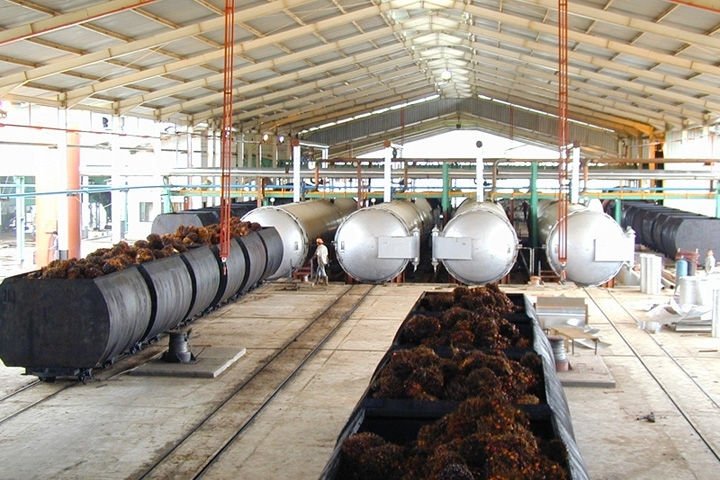
This first step in the palm oil extraction process involves sterilisation of fresh fruit bunches (FFB) and this is a crucial step, because it affects the final oil quality. Sterilisation using the conventional horizontal sterilisers can in fact help to reduce or avoid contaminants in the raw material before processing the fruit pulp. The steam condensing over the fruit surface in shallow fruit bunch stacks in cages provides copious condensation to rinse off the contaminants picked up in the field. The shallow fruit bunch stack facilitates condensate drainage. While most contaminants are rinsed off the fruit surfaces and drained off with the steriliser condensate, some will tend to be soaked up and retained by the empty fruit bunches.
We also have to take note that with the introduction of oil palm weevil, Elaidobius kamerunicus, for effective pollination in the late 1970s, compactness of the fruits in bunches has increased which in turn has led to an increase in the number of unstripped fruits in the sterilised bunches. In order to mitigate the resulting increased oil loss through the unstripped fruits, triple peak sterilisation with longer sterilisation duration was adopted. Unfortunately, prolonged sterilisation causes increase in oil loss in the steriliser condensate and bunch stalks. Unstripped fruit count still remains an issue in mills where FFB quality (ripeness) is inconsistent.
In the 1990s, vertical sterilisers were introduced in palm oil mills to facilitate the conveying of fruit bunches by motorised conveyors and avoiding the use of fruit cages. The considerable fruit bunch stacking height (6-8 metres) and resulting compression in the vertical vessel tends to cause high oil absorption of bunch stalks and considerable oil loss in the sterilizer condensate, affecting process efficiency. As with the oil, the hazardous waste contaminants were absorbed and retained in the empty fruit bunches augmented by poor drainage.
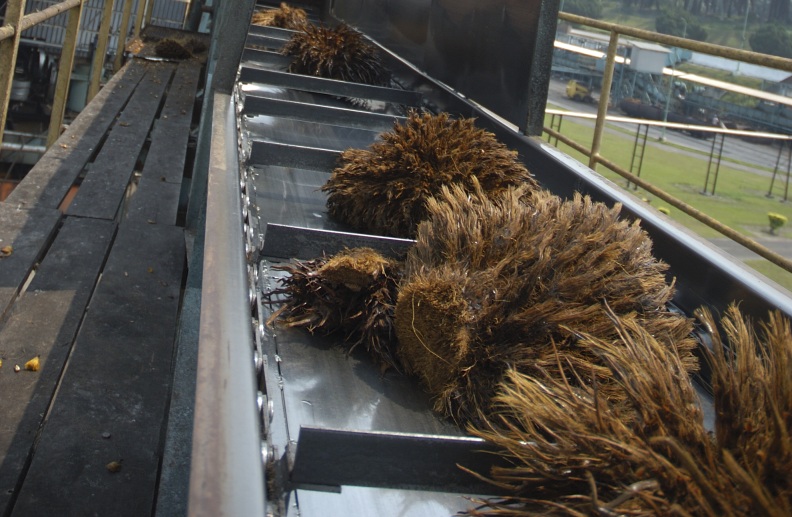
To address the above issues and in order to improve oil yield, many mills have resorted to recycling oil decanted from the steriliser condensate into production oil process. Similarly, oil absorbed by empty fruit bunches is recovered by pressing the EFB and recycling the EFB pressed liquor into the oil production process. These process changes that took place progressively since the 1990s have introduced the hazardous waste contaminants to the production oil and seem to be the major cause of presence of chlorine precursors in CPO.
Analysis of CPO originating from different mills in Malaysia subjected to refining conditions has shown that the capacity for the formation of the 3-MCPD ester and related compounds range from 3-14 mg/kg. This great variation may provide a pointer to practices in the extraction mills that contribute to the high capacity for the formation of the esters at the refining stage.
How did all these begin?
Prior to the 1980s, most oil palm plantations in Malaysia were owned by foreign entities and managed by British agency houses, for example, Harrisons & Crosfield, Guthrie, Barlows Boustead and Sime Darby. Others were owned and managed by European companies, such as Anglo-Dutch Unilever, Franco-Belgian Socfin and Scandinavian United Plantations. These companies developed Malaysian oil palm plantations and estate-based palm oil extraction mills to produce palm oil as an edible product and were conscious and vigilant that the palm oil is meant to be served on the tables as a food product for European consumption. Both plantation practices and mill processes were consciously carried out as a food industry.
Since the 1980s, most of these plantations were acquired either by the government or Malaysian companies.
Government development agencies, like FELDA, FELCRA and RISDA began to cultivate oil palm on newly opened land areas. Their plantations continue to be managed by smallholders who sell their crops to be processed by central facilities in government-related palm oil extraction mills.
Malaysian companies also aggressively ventured into palm oil plantations, either through acquisition of existing estates or development of green field plantations. Companies like, IOI, KLK and PPB fall under this category. These companies built and operate their estate-based palm oil extraction mills to process their crop.
Also, smallholders began to cultivate oil palm on their land and today there are more than 550,000 small farmers who account for close to 40% of the total oil palm planted area. Smallholders are taken to mean family-based enterprises who cultivate oil palm from less than 50 hectares of land. For processing their fresh fruit bunches (FFB) smallholders depend on private independent mills. Thus, the local private palm oil processing industry developed with proliferation of private independent mills, which purchase FFB from the smallholders to produce crude palm oil and kernels.
Today, the palm oil processing industry consists of about 170 estate-based palm oil mills, 105 government-related palm oil mills and 190 private independent palm oil mills comprising about 37%, 22% and 41 % respectively of the total industry processing capacity.
The government-related palm oil mills and private independent palm oil mills jointly comprise a whopping 63 % of the industry’s processing capacity. At times, these entities appear to be oblivious of the final usage of their produce or not have the capacity to exercise control of the quality of either the FFB that they purchase or the crude oil that they produce. These sectors of the industry are the major cause of the contamination of palm oil with questionable substances. The crude palm oil from these industry sectors pose health risks related to palm oil.
Prior to the 1980s, the estate-based oil palm plantations owned and managed by foreign entities, were conscious that they were producing food product for European consumption and therefore adhered to strict sanitation practices. Sources of contamination were isolated from the main product.
Stringent rules were adhered to ensure FFB quality by proper harvesting and handling standards. Field practices minimised the contamination. Fruits harvested were transported to the mills and processed within the same day.
The steriliser condensate contains leached out palm oil with traces of contaminants picked up in the fields. The residual oil from the steriliser condensate was decanted and sold separately in drums as sludge oil for low value products, such as laundry detergents. Similarly, process tank and storage tank were cleaned regularly and washings were sold as sludge oil.
After separation of the fruits the empty fruit bunches (EFB) were discarded. Fruit pulp mass passing to digesters (MPD) after being stripped of empty bunch stalks were regularly analysed and monitored to ensure that a minimum amount of spikelets and bunch stalks, a source with the contamination, are carried to the presses.
Strict quality control was adhered to in maintaining product quality, all the time conscious that it is a food industry. Quality parameters like FFA and DOBI values were analysed and monitored closely throughout the day. It was thought to be a crime to blend or dilute poor quality oil with good oil to pass off the average value.
The estate-based plantation companies took great pride in producing mainly Special Quality (SQ) palm oil, made from high quality fruits and processed within the same day and adhering to established processing quality standards. The free fatty acid content was closely monitored as an indicator of the quality. Crude palm oil was then exclusively exported to Europe.
Over the years since the 1980s, palm oil for European consumption is still mainly supplied by estate-based plantation companies who have the marketing contacts and are generally stricter with quality control. Palm oil from government-related and private independent mills tends to be supplied to other markets and for biodiesel production.
New trends have emerged in the milling industry, especially at the private independent mills receiving FFBs from smallholders where palm oil is regarded simply as a commodity / product and little heed paid to the fact that it is destined for human consumption. There is little or no sanitation regulation in the palm oil industry for effective food safety initiative in the industry. Poor sanitation practices can be witnessed almost everywhere from the plantations to the mills. There will continue to be contaminants linked to palm oil produced under unsanitary conditions. The most high-profile example is the issue of 3-MCPD, which was raised by EU regulators since 2006.
There is the “human factor” where given the departure of expatriate management in the local palm oil industry, efforts to replace the loss in knowledge regarding sanitation regulations was not established. One wonders if industry regulators themselves are conscious of food safety issues in the palm oil industry. This is because Government food safety regulations at best are general in nature, not addressing the palm oil industry issues, and thus the relevant regulations remain in drawers and shelves.
Current field practices allow harvested fresh fruits bunches along with large quantities of debris and soil contamination to arrive at the mill. Plantations in these sectors are solely tended to by smallholders who are not educated on good plantation practices. Fruit harvesting and handling practices are haphazard. Fresh fruit bunches arrive late to the mills and are inconsistent in quality.
Many mills recycle oil decanted from the steriliser condensate into production oil process, oblivious to the fact that it contaminates the production oil with contaminates picked in the fields. Today, hardly any of these mills sells sludge oil.
Similarly, many of these mills resort to pressing the empty fruit bunches and recycling the EFB pressed liquor into the oil production process in the hope of squeezing out additional profit. These residual oils are added to the production oil to improve oil yield, but is a major source of contamination detrimental to the quality of production oil. This practice is most common when using vertical sterilisers that incur high oil losses through steriliser condensate and empty fruit bunches.
In some mill systems, fresh fruit bunches are shredded and heated to high temperature, circa 170 °C to reduce steriliser condensation and further improve oil yield. The high temperature invariably leads to oxidation of oil and formation of 3-MCPD esters at the mills. Lately, a new trend has emerged whereby various chemicals like, water or oil soluble chemicals and enzymes are promoted at trade exhibitions for addition to either the process steam or the fruit pulp mass to reduce free fatty acid levels or improve oil yield at the mill effecting oil quality. Maximising profits at any cost and by any means appear to have overtaken food safety considerations.
Oil recovery from clarification sludge and pressed mesocarp fibre (using hexane solvent extraction) and added to production oil is another suspect of contamination.
All these process changes have introduced the hazardous waste contaminants to the production oil and seem to be the major cause of the problem.
To the extent that even established universal practices in food industries are deviated, for example, using saline water for processing in certain geographical locations, using mineral oils and grease for lubrication contaminating product palm oil, and using non-food grade boiler water treatment chemicals. All these poor practices compound the contamination of palm oil with delirious substances.
The use of palm oil as a feed stock for biodiesel production has further contributed to diversion of attention and caused a negative effect on the consciousness. This new business opportunity inadvertently facilitated slackness of being mindful of the need for stringency of the final food product quality. National initiatives like Waste to Wealth, Zero Waste and Key Performance Index have been misconstrued in the palm oil industry in Malaysia to the detriment of food safety.
Palm oil milling industry is in a closet
Another factor emerging is the shroud of secrecy prevailing in the milling industry. Little dialogue takes place among the milling industry personnel, which is evidenced, for example, by the absence of any user discussion group. Every company keeps their knowhow as a secret because of the copycat culture of the industry personnel. The lack of transparency has given the opportunity for the industry to escape public scrutiny of food safety performance.
The industry does not appreciate intellectual property, which severely discourages innovation.
These conditions are inadvertently brought about by the regulators not wanting or being reluctant to ‘impose’ any performance or quality thresholds, adopting instead a laissez-faire approach, citing that world trend is to move towards de-regulation. Thus the whole situation is left entirely to business-to-business market interactions among the millers, traders and suppliers.
Palm oil industry players whether from the plantations or the mills or the refineries appear oblivious of global trends and threats outside their daily work, for example, few have heard of food safety, sustainability or climate change issues, except for a few in their sustainability department.
Most Malaysian consumers are neither aware nor much concerned where their food comes from, and do not lie awake worrying about food security. This applies even in India, for example, the Dabbawala community in Bombay to whom palm oil is promoted. They expect the producers and retailers will do right. Rightly so. No one visualises Nutella, margarine or cookies with a side-order of contaminants with their meals, let alone cancer-causing contaminants. With government-related and private independent mills producing palm oil for local consumption, prudent consumers should begin to enquire the levels of contaminants in their food.
Remedial Measures
While Malaysian industry leaders keep echoing that palm oil certification should be market-driven, Malaysia has yet to reach the stage of Ethical Consumerism for self regulation. And given the present mindset of the industry it appears one cannot expect the industry to adopt desired food safety behaviours and standards any time soon on their own.
The single certification scheme for palm oil imported into Europe proposed by the European Union (EU) may just provide the impetus for the food safety performance specifications to be adopted, albeit grudgingly, to protect public safety as regards palm oil. But the Malaysian Sustainable Palm Oil (MSPO) certification scheme, if it can implement the required performance levels may be a beacon of hope for food safety to Malaysian consumers.
The “human factor” whereby predominantly the present management regarding the palm oil simply as a commodity / product and not being conscious of the fact that it is destined for human consumption is the major cause of the predicament the industry has been plunged into a condition of despair.
A risk resilient business culture and best practice behaviours start at the top.
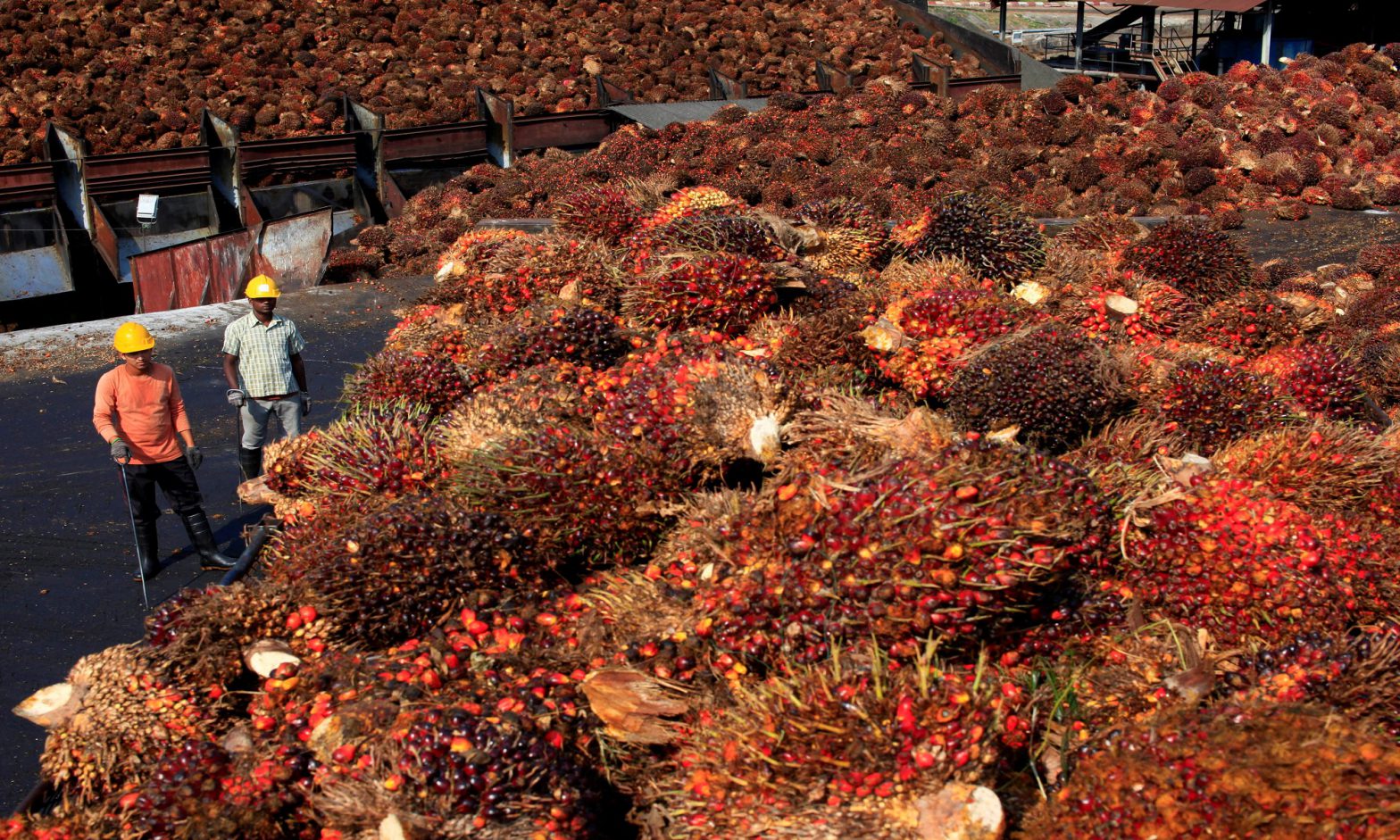
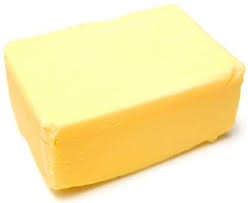

9 replies on “How Cancer causing substances crept into food products containing palm oil?”
Thanks For Giving Valuable Information. I am really Impressed.
THIS IS SERIOUS. OUR PALM OIL INDUSTRY IS UNDER MAJOR THREAT AND CONSEQUENTLY TO THE ECONOMY OF MALAYSIA.
AS MR CHANDRAN AND OTHER EXPERTS POINT OUT, WE HAVE TO URGENTLY STOP ALL AVENUES OF CONTAMINATION LEADING TO THE PRODUCTION OF 3-MCPD IN THE OIL.
HOPE OUR PALM OIL EXPERTS AND MANAGERS ALONG WITH OUR POLITICAL LEADERS AND TRADE UNIONS WILL TAKE IMMEDIATE ACTION ON THIS IMPORTANT ISSUE.
about palm oil, i heard that nutella contains palm oil, is it safe?
is it really causing cancer?
food safety is really important, nowadays we should take action and more aware with what’s we eat..
This is a remarkable insight into how things have changed since palm oil has become a ubiquitous commodity and no longer considered just a food product and self-regulated in terms of sanitation and food safety.
I would like to further discuss these issues with you and how the levels of contaminants could be lessened at least at the plantation/smallholder level.
Would you mind getting in touch?
Thank you.
I understand that GE levels have been reduced but 3-MCPD is still relatively high. How concerned is the industry about this? We hear very little about this and only MR Chandran seems to have written about this recently.
I wanted to know if you considered the issues about removing 3-MPCD +GE
could be achieved at the mills or is firstly preventing contamination of
the bunch in the first place during harvesting possibly the better solution?
Are contaminant levels constant or rise and fall according to the seasons and conditions of the ground the FFB fall upon, muddy as opposed to dry?
From your piece, it would appear that this problem occurs mostly in the independent milling sector and from bunches produced by smallholders. Has any study been done that identifies this?
It was only back when the issue of potential cancer-causing contaminants in palm oil erupted in Italy during 2017 and it’s subsequently hasty disappearance as a cause for concern made me think there was probably more to this than first met the eye. Recently earlier on this month, my interest was rekindled when Teresa Kok proposed along with her CPOPC counterparts, an agreed ceiling for 3-MCPD levels for all vegetable oils. But with Soybean 0.4, Rapeseed 0.2, sunflower 0.5 and palm oil at 3 ppm it’s pretty clear that by asking for a ppm of 2.5, this hardly needs to concern other vegetable oils with their much lower 3-MCPD levels. Is this much-discussed within the industry and how much of this is an issue they would like to see a resolution for?
Clearly, good bunch handling has a part to play in reducing the production of FFA. The manner in which FFB are extracted by rail in steriliser cages at UP’s Jendarata Estate is undoubtedly the benchmark in terms of fruit handling and speed to steriliser. We think a similar dedicated system but based on road transport is also feasible.
The palm oil industry and the government regulator should be concerned, especially with the new regulation in EU concerning 3-MCPD contamination in food using palm oil.
The European Commission has recently set the maximum levels for 3-MCPD for vegetable oils and fats placed on the market for the final consumer or for use as an ingredient in food at 1250 µg/kg, which shall apply from 1st January 2021. For production of baby food it is limited to 750 µg/kg, and for infant formula it is limited to 125 µg/kg.
It applies to oils and fats from coconut, maize, rapeseed, sunflower, soybean, palm and olive oils. At present, except for palm oil, all other vegetable oils have levels much lower than the set maximum levels post-refining.
European customers purchase “Segregated Palm Oil” from Malaysian producers and refine it themselves to meet EU food safety requirement. The capacity to form 3-MCPD has a large variation in Malaysian CPO (3 to 14 mg/kg).
The industry has realised that chlorine contamination in crude palm oil is the precursor for the formation of 3-MCPD. However, the industry stakeholders are at grapple with one another with the issue, as to who should pay for production of contaminant-free palm oil.
Since the beginning of 1990s chlorine contamination in crude palm oil in Malaysia started to appear when the industry started to migrate from the conventional horizontal steriliser vessel to newer steriliser designs of vertical/oblique/tilting vessels at the mills.
One of the critical functions of the initial process of sterilisation in the production of palm oil at the mills is removal of surface contaminants by condensation of steam over the fruit surface that cleans the surface. Sterilisation in conventional horizontal sterilisers effectively eliminates surface contaminants that adheres to the palm fruits during harvesting in the plantation fields. The contaminants washed off the surface is drained from the steriliser with the steriliser condensate, which flows into a sludge pit for de-oiling before it’s let into treatment ponds.
The newer steriliser designs cause high oil losses via both the steriliser condensate sludge and the empty fruit bunches. In order to reclaim these residual oils, empty fruit bunches are pressed and the oil thus recovered together with the oil skimmed from the sludge pit are re-cycled back into production oil extraction stream. Almost 7 to 9 % of the production oil constitutes the recycled oils at mills that use the new steriliser designs. The chlorine content in the oil reclaimed from the empty fruit bunches and steriliser condensate sludge is estimated to 3 mg/kg and 20 mg/kg respectively.
The migration to new steriliser designs is to facilitate automation in fruit bunch transportation via mechanised conveyors at the mill and thereby to reduce labour requirement.
Fruit bunch harvesting, handling and transportation to mills has not changed significantly in the last 100 years of the industry, while the introduction of contaminants started with the new steriliser designs. However, good practices in harvesting, handling and transportation play important roles in the quality of palm oil. Free fatty acid (FFA) level in the production oil is an indicator of field practices employed on the fresh fruit bunches delivered at the mill. High FFA reveals over-ripeness of fruits, poor handling and bruise of fruits, and delay in transporting the fruits to mills after harvesting. Exocarp, the outer layer of the pericarp of a fruit acts as a protective layer to maintain oil quality until the fruit is processed. Up to the 1970’s reputable companies produced only special quality (SQ) palm oil for food at free fatty acids (FFA) levels below 2% (as palmitic acid), but today the standard palm oil that qualifies for trade has FFA level below 5%.
Contaminant level is higher when fresh fruit bunches are harvested before the rain after application of fertiliser, herbicide or pesticide on the ground. The industry uses chemicals with chlorine content, as they are cheaper than the non-chlorine versions.
As stated earlier, the capacity to form 3-MCPD in Malaysian crude palm oil has been studied and published, and was found to have a large variation (3 to 14 mg/kg). The problem of contamination is due to bad production practices at the mill where contaminated oils are recycled back into production oil. It is predominant in oils from mills that use vertical/oblique/tilting vessels sterilisers. It is therefore not limited to independent milling sector or with fruit bunches produced by smallholders.
Loose fruits not collected from the ground in time to prevent deterioration or that are not collected at all is a huge loss of oil recovery. Mechanisation that assists in loose fruit collection should be welcome in both to increase revenue and reduce labour.
As to the statement by the Minister, with reference to other vegetable oils, it was in disguise to create a public perception in Malaysia that palm oil is being discriminated by EU.
Quote: “On the issue of the contaminant level of the 3-Monochloropropanediol (3-MCPDE) proposed by the European Commission, she said the ministers agreed that one maximum level at 2.5 ppm for all vegetable oils should be adopted as the acceptable safety limit for consumption.”
Quote: “Kok reiterated palm oil should not be discriminated and be treated equal to soy, rapeseed and sunflower, which are the native oil crops of developed nations.”
Need to tackle the trust deficit
https://www.nst.com.my/opinion/letters/2019/04/476863/need-tackle-trust-deficit
United Plantation was the company that introduced residual oil reclamation through empty fruit bunches pressing to improve oil extraction rate (OER) in early 1990’s.
Both field practices and mill processing play important roles in the production of good quality oil for food. The industry has lost its awareness that they are in food production business.
[…] Ügynöksége (IARC) is azonosított 3-MCPD észtereket a finomított pálmaolajban, amiről egyelőre annyit lehet tudni, hogy „lehetséges, hogy rákkeltő hatású az emberi szervezet […]
[…] Agency (IARC) has also identified 3-MCPD esters in refined palm oil, which is currently known to be “possibly carcinogenic to the human body […]
The International Agency for Research on Cancer (IARC) is an intergovernmental agency forming part of the World Health Organization of the United Nations.